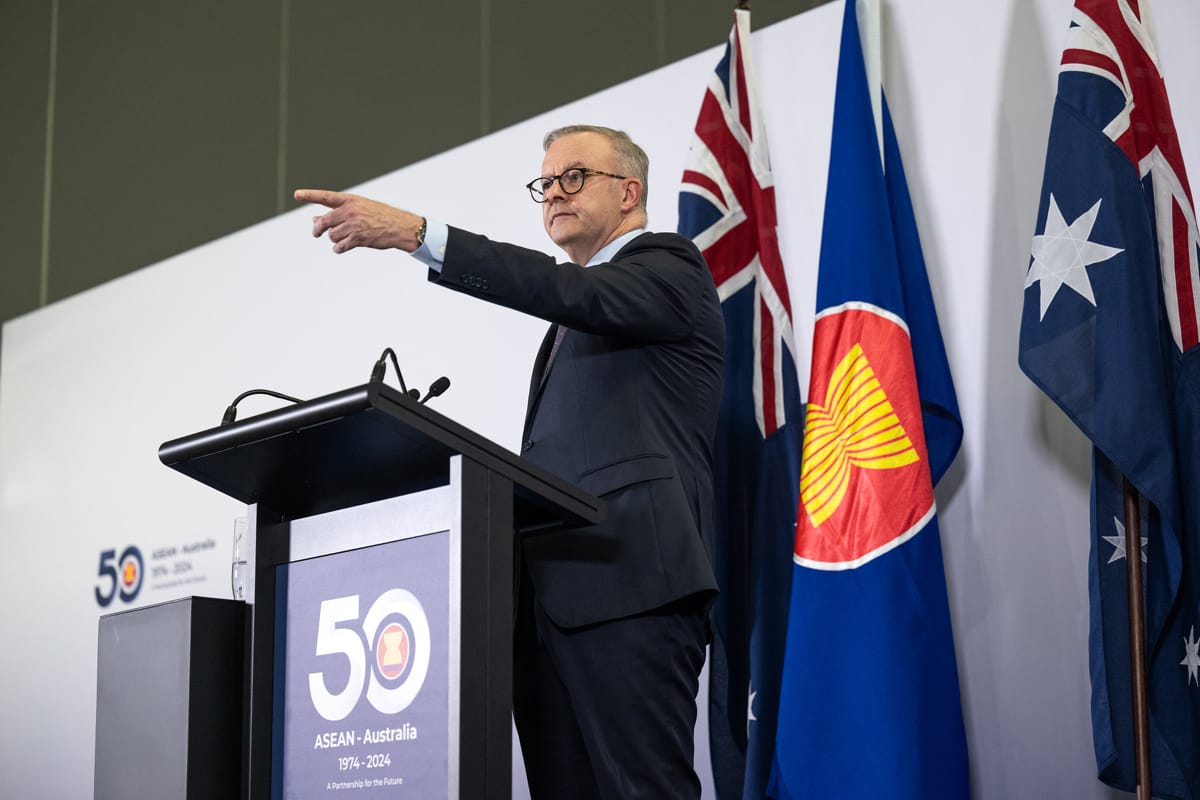With a cost-of-living crisis, mounting pressures from other expenditure areas, and a looming federal election, the 2024-25 foreign aid budget is not quite Labor’s promised rebuild. Instead, the official development assistance (ODA) budget is effectively static, or even in decline by some measures. Australia is increasingly operating at the edges of development.
The parallel expansion in non-ODA, yet development-related spending does allow for greater scale. But this comes with trade-offs, in terms of transparency, development outcomes, and Australia’s international reputation.
A shift away from traditional grant-based aid has been taking place for a while now. This was much the same story as last year, with initiatives such as the Pacific Australia Labour Mobility scheme and the Emerging Markets Impact Investment Fund, the latter since been rebadged as Australian Development Investments, with $56 million (already planned in last year’s budget) to blend small amounts of ODA to mobilise private finance.
Another of last year’s key announcements was $1.4 billion over four years in Pacific capacity-building peace and security programs. This was packaged together with maritime security infrastructure, in a hybrid defence-development measure that spilled out of DFAT to Home Affairs and the Australian Federal Police.
A decision has clearly been made to abandon, or at least delay, a meaningful rebuild of the traditional aid program in favour of an expanded suite of alternative financing approaches which operate right at the edge of development.
This year goes a step further with the foreign policy budget centrepiece, the $2 billion Southeast Asia Infrastructure Investment Fund (SEAIFF).
SEAIFF will be administered not directly by DFAT but by Export Finance Australia. We still don’t know much about it, other than that it will focus on clean energy and infrastructure with the goal of promoting Australian business linkages with the region – dominated as it is by low and middle-income developing countries. Only modest amounts are allocated in this budget for SEAIFF’s establishment, as the $2 billion will sit off-budget using the national interest account of EFA. The budget papers also predict that some of the costs of engagement in Southeast Asia, of which SEAIFF is a part, will be offset through increased revenue to Home Affairs from visa applications.

Initiatives such as the SEAIFF and its more overtly development-focused Pacific counterpart – the Australian Infrastructure Financing Facility for the Pacific (AIFFP) – allow Australian public funds to achieve significant scale compared to just giving out aid grants. It’s a smart way to squeeze maximum reach out of a very constrained budget, and a much easier sell to taxpayers than outright ODA grants.
But there is a downside. The semi-commercialisation of Australia’s international development efforts could have many ramifications, not least for transparency. Finance administered by Export Finance Australia can be badged as “not for publication” due to commercial sensitivities. That might be reasonable for some commercial investments, but it will mean less accountability compared to if the funding occurred within the Australian development program. DFAT’s intention to launch an ODA data portal later this year is welcome, but will be less helpful if development-like efforts are increasingly carried out by non-ODA expenditure.
It is also unclear how Australia’s international development objectives will factor in. Australia’s new International Development Policy, launched last year, seeks to strengthen Australia’s position as a high quality, rather than transactional, development partner and mandates quotas for climate and gender objectives in Australia’s ODA investments. While the AIFFP is subject to similar requirements, it’s not clear that the same will apply to SEAIFF, which is not as explicitly development-focused as AIFFP. Similarly, it is not clear what kind of safeguards and performance management requirements SEAIFF will be subject to when it comes to its development, climate, and gender impacts – as opposed to financial targets and the aim of supporting Australian businesses.
While non-ODA spending is growing, inertia on the ODA budget itself will have repercussions for Australia’s international reputation as a donor. Australia’s ODA to GNI ratio, used to measure the generosity of the aid program against other donors, is currently under 0.2% and projected to fall to 0.14% by 2036–37 – far below the international target of 0.7%, Labor’s goal of 0.5%, and the OECD average of 0.37%. With Australia due for an OECD DAC peer review next year, a backwards sliding in the ODA to GNI ratio is a bad look. Although climate finance featured, noticeably absent from the budget was any allocation for the UN’s Loss and Damage Fund, or any mention of the new global climate finance goal, both set to be finalised at COP in November where Australia will be under particular scrutiny as it seeks to co-host the 2026 COP.
A decision has clearly been made to abandon, or at least delay, a meaningful rebuild of the traditional aid program in favour of an expanded suite of alternative financing approaches which operate right at the edge of development.


